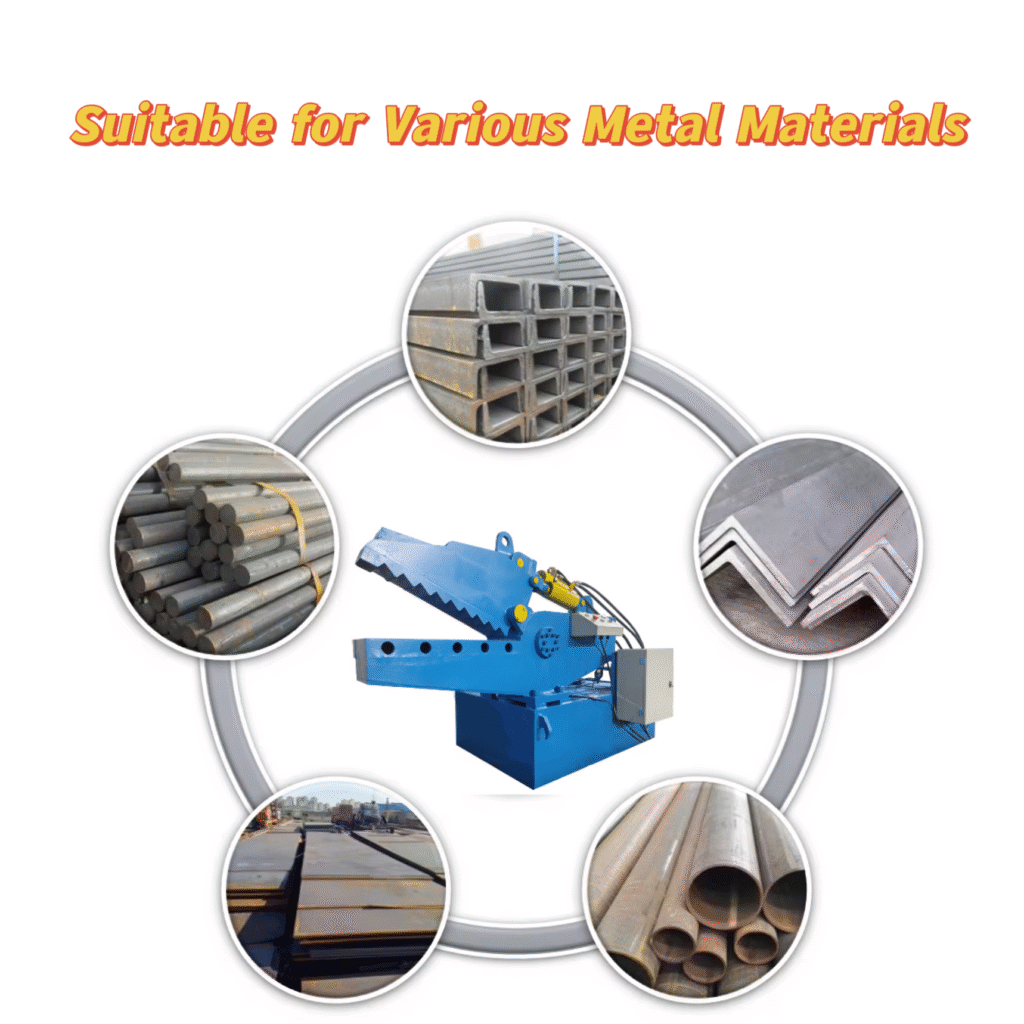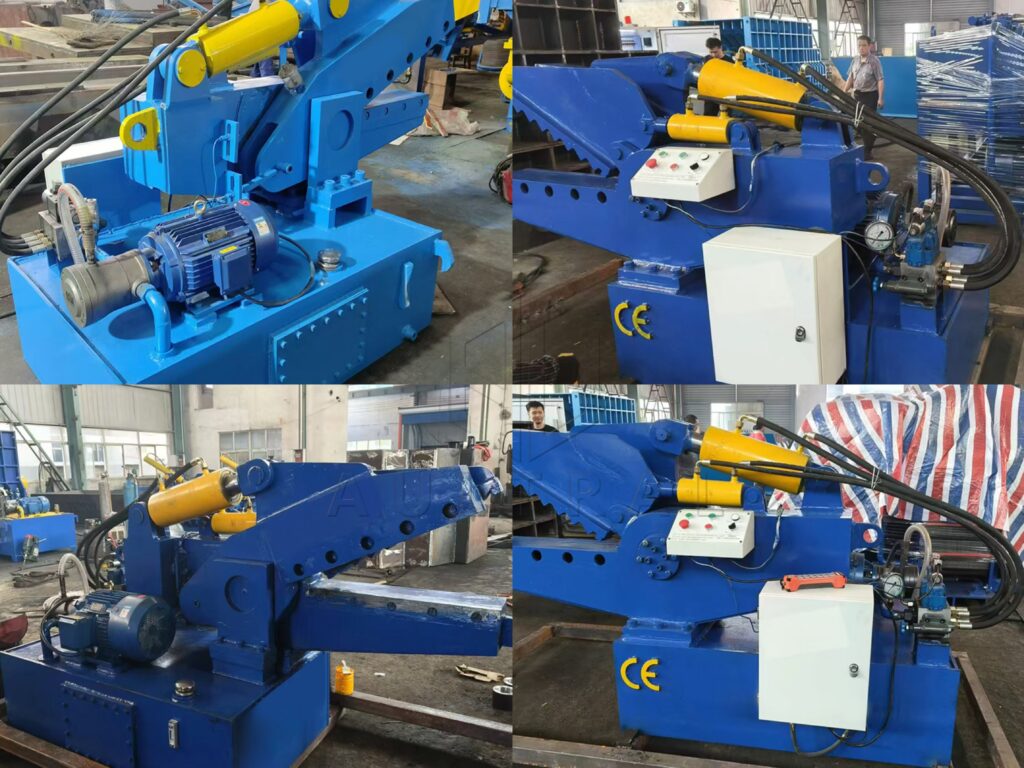When it comes to recycling and processing scrap metal, efficiency and precision are critical. One of the most widely used machines in this industry is the alligator shear. Known for its powerful cutting force and versatile design, the alligator shear is the ideal solution for processing a wide range of scrap metals, from steel bars to copper and aluminum profiles. Its name comes from its hinged jaw-like blades, which resemble an alligator’s mouth, delivering strong cutting performance with each stroke.
What is an Alligator Shear?
An alligator shear is a hydraulic cutting machine designed to cut scrap metals into smaller, more manageable pieces. It uses a hinged jaw mechanism powered by hydraulics to provide high shearing force, making it suitable for ferrous and non-ferrous metals. Its compact size, ease of operation, and strong performance make it popular in recycling yards, metal processing plants, and foundries.
Key Features of Alligator Shears
-
Hydraulic Power System – Equipped with a strong hydraulic cylinder that ensures smooth and powerful cutting.
-
Durable Blades – Made of wear-resistant alloy steel for long service life.
-
Safety Mechanisms – Includes emergency stop systems, protective covers, and foot pedal control.
-
Compact Design – Small footprint, easy to install and move.
-
Versatility – Suitable for cutting round bars, square steel, flat steel, angles, profiles, and non-ferrous scrap.
-
High Efficiency – Continuous cutting capability improves overall recycling output.
Applications of Alligator Shears
-
Scrap Yards: Cutting scrap steel, pipes, and rods into transportable sizes.
-
Metal Recycling Plants: Processing copper, aluminum, and brass for smelting.
-
Steel Mills: Preparing steel bars and profiles for reuse.
-
Foundries: Reducing bulky scrap into furnace-ready pieces.
-
Construction & Demolition Recycling: Cutting rebars, beams, and structural steel.
Advantages of Using an Alligator Shear
-
Cost-Effective: Reduces labor and processing costs compared to manual cutting.
-
Improves Safety: Eliminates the need for gas cutting or torch cutting.
-
Increases Productivity: High cutting speed ensures maximum efficiency.
-
Space-Saving: Compact structure suitable for small and medium workshops.
-
Durable Performance: Heavy-duty construction designed for continuous operation.
Technical Parameters of Alligator Shears
Below is a typical parameter table for alligator shears. Values may vary depending on the model and customization.
| Model | Cutting Force (Tons) | Blade Length (mm) | Motor Power (kW) | Cutting Frequency (times/min) | Max Opening (mm) | Weight (kg) |
|---|---|---|---|---|---|---|
| Q43-250 | 250 | 600 | 15 | 8–12 | 400 | 4500 |
| Q43-400 | 400 | 700 | 22 | 8–12 | 500 | 6800 |
| Q43-630 | 630 | 800 | 30 | 6–10 | 600 | 9500 |
| Q43-1000 | 1000 | 1000 | 45 | 6–8 | 700 | 13500 |
| Q43-1250 | 1250 | 1200 | 55 | 6–8 | 800 | 16500 |
How to Choose the Right Alligator Shear
When selecting an alligator shear, consider:
-
Material Type: Ferrous or non-ferrous metals.
-
Cutting Thickness: Thicker materials require higher cutting force.
-
Production Volume: Larger recycling yards may need heavy-duty models.
-
Space Availability: Compact models are ideal for small workshops.
-
Automation Needs: Choose between manual, semi-automatic, or fully automated control.
The alligator shear is an indispensable machine in the scrap recycling industry. Its combination of powerful hydraulic cutting, durable construction, and versatility makes it suitable for a wide range of applications. Whether used in small workshops or large recycling plants, alligator shears ensure cost-effective, safe, and efficient metal cutting. Investing in the right model will greatly improve productivity and reduce processing costs, making it a valuable asset for any metal recycling business.



